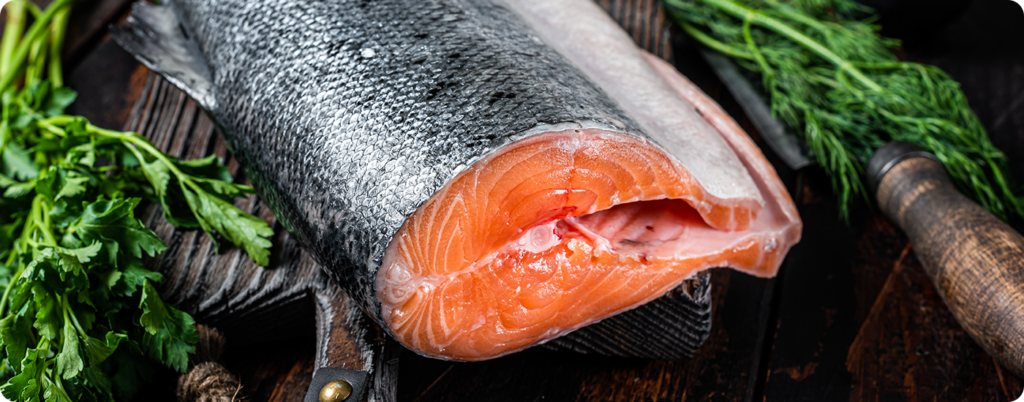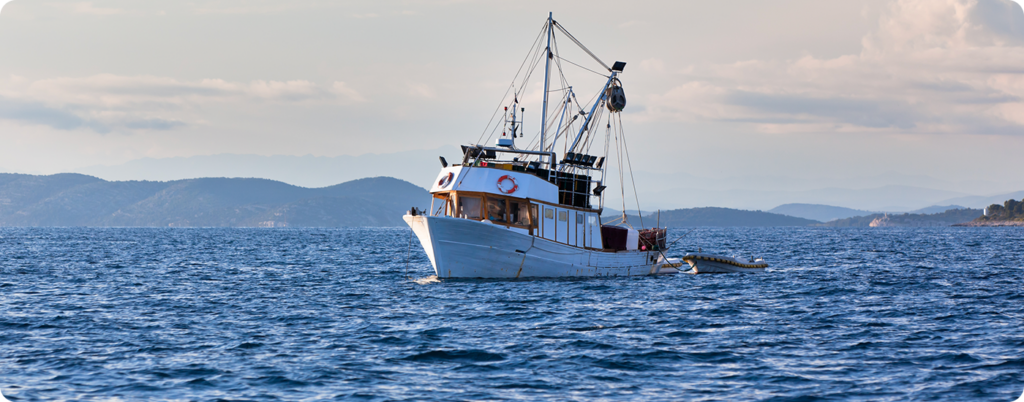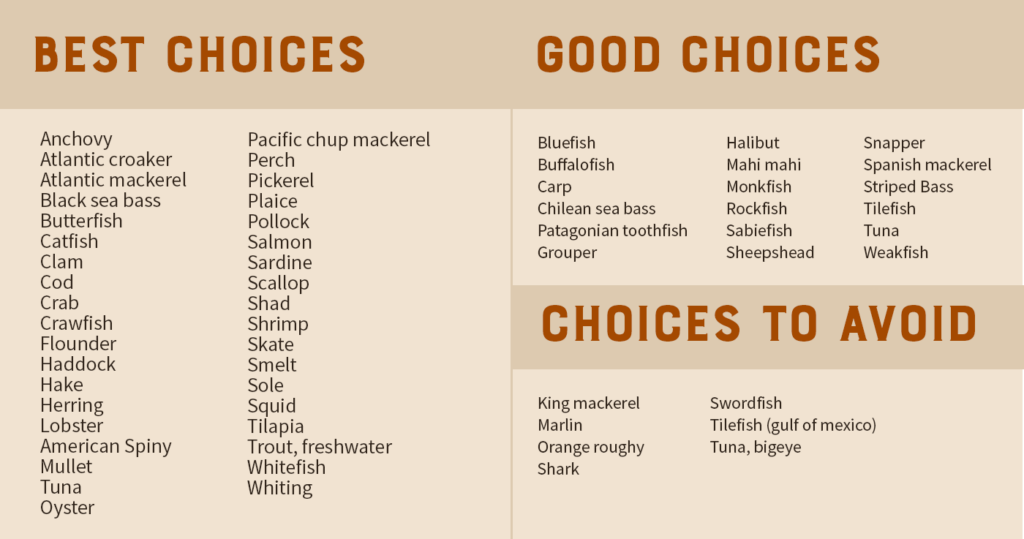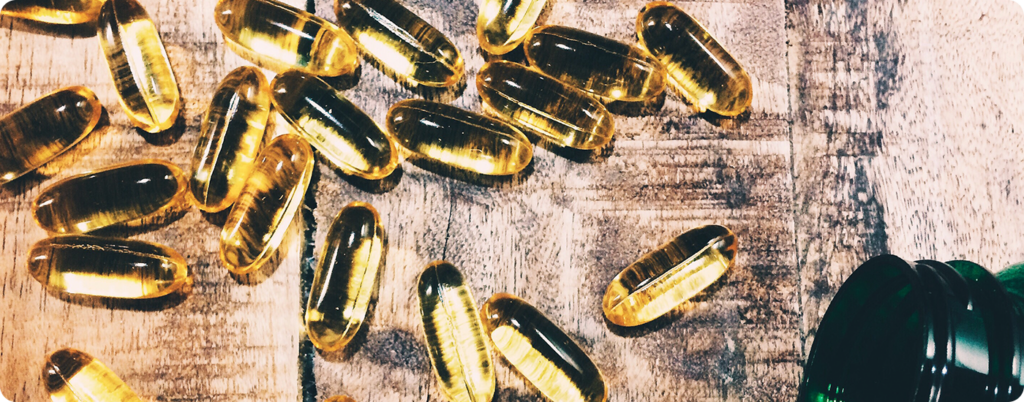PLEASE NOTE: The information in this blog is for educational purposes only. It is not a substitute for professional medical advice. Consult your healthcare provider if you’re seeking medical advice, diagnoses, or treatment.
Humans appear to have evolved with seafood as a dietary staple (1).
Freshwater or marine protein sources may have accounted for 10-50% of the diet of early modern humans (depending on location)(2).
Some theorize that high-quality, nutrient-dense seafood primarily made our brains what they are today.
If you’ve followed Paul Saladino, MD, or Heart & Soil, you’ve likely seen that we generally don’t suggest eating a ton of fish.
Why is this?
As you’ll see, seafood can be incredibly nutritious, but modern options are much more toxic than throughout history.
You should consider several issues before buying that salmon fillet or dozen oysters.
You can still find safe, sustainable, and nutritious seafood options. It just takes extra effort in many cases.
Let’s figure out how to find high-quality options!
The Health Benefits of Seafood
Seafood contains various nutrients that may support your eye, brain, and heart health (3, 4).
Like dairy products, eggs, and meat, fish is high in protein. It’s also a great source of B vitamins, vitamin D, and minerals like phosphorus, iron, copper, zinc, and selenium (5).
Options like cod and oysters can also provide iodine, which is crucial for the thyroid hormones T3 and T4 (6).
Fish and shellfish also contain antioxidants like vitamin E and selenium (7). Selenium may protect against metals like mercury, which have no known normal metabolic function (more on this below)(8).
Most of the seafood hype revolves around EPA (eicosapentaenoic acid) and DHA (docosahexaenoic acid), two essential fatty acids that must be obtained from the diet and can’t be stored by our bodies for long periods of time (9).

Both EPA and DHA play vital roles in human growth, development, and inflammation (10, 11).
Numerous diseases and disorders like cardiovascular disease and ADHD are associated with inadequate intake of these fatty acids.
Unfortunately, the typical Western diet is high in omega-6 fatty acids (from seed oils and other processed foods), which can displace DHA (12).
DHA is thought to have played an integral role in the evolution of human intelligence.
Despite the wide-ranging benefits, there are various issues you should consider when consuming seafood!
8 Modern Seafood Issues to Be Aware Of
Unfortunately, modern seafood presents a variety of health and ethical issues to be aware of.
These include:
1. Heavy Metal Exposure
Contamination from heavy metals (like mercury, lead, and arsenic) is one of the most discussed seafood issues.
Pollution from heavy metals has become a major challenge during the 21st century. Heavy metals are virtually indestructible and can persist in environments for years (13).
These metals can accumulate in the vital organs of fish and interfere with immune, digestive, and respiratory functions (14).
Metals like mercury are easily transferred to the human body, and high concentrations may contribute to neurological damage, cardiovascular disease, and nervous system damage (15, 16, 17).
Large, predatory fish like sharks, swordfish, and tuna are notorious for heavy metal accumulation as they can accumulate metals from their prey (18).
Generally, the higher up a fish is in the food chain, the higher their concentration of heavy metals.
Children, pregnant women, and lactating mothers are most vulnerable to heavy metal hazards (19).
2. Antibiotic Usage
Antibiotics are commonly used in aquaculture (think farm-raised fish) to prevent and treat bacterial diseases (20).
These antibiotics are generally administered through medicated feed and are poorly absorbed. Some estimates suggest that as much as 90% of the antibiotic is excreted through animal feces and urine.
Antibiotic residues can spread in the environment and contribute to antibiotic resistance in humans (21). Bacteria can become resistant to antibiotics, leading to more difficult-to-treat infections.
Antibiotics are stable and non-biodegradable, so they may remain in fish or shellfish for human consumption (22).
Local regulations vary widely when it comes to the use of antibiotics.
About 90% of aquaculture occurs in developing countries that may lack regulations around antibiotic usage or enforcement (23,24).
3. Unnatural Diets
Just as with beef production from industrial agriculture, aquaculture often relies on unnatural feed products.
Tilapia are often fed corn and soy; salmon are commonly given vegetable oils (particularly rapeseed oil) and other plant-based ingredients (25). In nature, salmon are meant to feed on small fish and crustaceans.
This change in diet can alter the fatty acid profile of the animal, leading to more omega 6’s and less omega 3’s.
4. BPA Exposure
Bisphenol A (BPA) is a man-made compound used in plastics, food storage, medical equipment, electronics, and other everyday items (26).
BPA has been found in the air, water, soil, humans, and wildlife. Plastics in the ocean can leach BPA, directly contaminating fish.
BPA is a known endocrine disruptor that can bind to androgen, thyroid, and estrogen receptors (27). It may contribute to sexual dysfunction, infertility, and decreased sperm quality (28).
5. Parasites
As with any food item, fish and shellfish can host parasites and bacteria capable of causing disease after consumption (29).

Populations that eat raw or undercooked seafood are at a greater risk for parasitic infection (30). Thoroughly cooking the fish can kill parasites that may be present.
You can also look for “sushi-grade” fish from a reputable provider if you enjoy raw seafood. They should be able to answer your questions about origin, freshness, and handling processes.
Certain aquaculture environments pose a greater risk of parasitic infection.
For example, the Chilean salmon industry is consistently affected by parasitic, bacterial, and fungal infections (31). Sometimes resulting in the death of millions of fish.
6. Microplastics
Some studies estimate that 88% of the sea surface is contaminated with plastic waste (32).
Around 8 million tons of plastic enter the oceans each year. In 2016, over 90% of seafood imports to the US came from regions with significant plastic pollution and waste leakage (33).

Plastic products can break down into smaller fragments that ultimately can be ingested by fish and shellfish.
The exact impact of microplastics on human health is unclear but likely depends on dosage, specific chemical exposures, and size.
7. Overfishing

People are really good at catching fish nowadays.
Fish populations can have a tough time maintaining healthy levels if caught faster than they can reproduce.
For example, there’s been an estimated 80% reduction in stocks of finfish and shellfish (34). The Pacific Salmon Commission reported a 60% decline in the chinook salmon population over the past 40 years (35).
Seafood from fisheries has plateaued and is unlikely to supply enough for growing populations (36).
8. Bycatch & Illegal Fishing
A variety of fishing techniques (like longlines and bottom trawls) can result in the catching or killing of untargeted species. Bycatch is often discarded if it can’t be sold or its capture is prohibited.
Bottom trawls refer to nets that are dragged along the seafloor. As you can imagine, this method isn’t very precise. Some estimates say that over 4 million tons of bycatch come from bottom trawls yearly (37).
Longlines are another popular method that utilizes thousands of baited hooks. These can be over 50 miles long.
These techniques can accidentally catch and kill sea turtles, sharks, seals, birds, and other species (38).
An estimated $23.5 billion worth of seafood is caught illegally each year.
A study from 2014 even concluded that up to 32% of imported seafood in the US was caught illegally (39). Illegal use of antimicrobials is another common issue (40).
Despite these issues, seafood can still be a valuable addition to your diet. It just requires some digging to find safer alternatives!
How to Safely Enjoy Seafood
It’s suggested that Americans (pregnant women and children in particular) consume seafood at least twice a week (41).
However, children and pregnant women are more at risk for the hazards of heavy metals and other contaminants (42). So, you must research your seafood sources beforehand.
If you or your children regularly consume fish, it may be helpful to periodically run testing with a medical provider to ensure you’re not being exposed to excessive amounts of heavy metals or other contaminants.
Utilizing a resource like the Monterey Bay Aquarium Seafood Watch can also be helpful. They aim to help consumers find safe, sustainable seafood options.
Check out their site to receive guides on suggested fish species based on your location in the US or how to find sustainable options for specific species (like salmon and shrimp).
The FDA also publishes guidelines for fish consumption. They offer three ratings for different seafood options.

As you can see, larger species like swordfish, tuna, and shark can contain higher levels of mercury or other contaminants.
Fresh vs. Frozen Seafood: Which is Best?
Is fresh fish better than frozen options? It depends!
“Fresh” fish from the grocery store may, in fact, be far from fresh.
It’s common for products to be taken in and out of the freezer a few times before they hit your plate. This can negatively impact the taste and overall quality of the fish.
Unless you live close to the ocean, getting your hands on high-quality, fresh fish may be tricky. If you don’t live near an ocean, flash-frozen seafood may be your best bet.
People struggling with histamine intolerance also tend to benefit from frozen seafood options as they can help minimize excess histamine production.
Wild-Caught vs Farm-Raised Seafood
There is an idea that wild-caught seafood is always better than farm-raised seafood. This is not the case.
Both wild-caught and farmed seafood can have various issues, as seen above.
As with cows, chickens, or pigs, farming methods of seafood lead to a huge quality difference.
For example, Norway and Chile lead the way in producing farmed salmon (43).
Chile, in particular, is known for using excessive amounts of antibiotics and raising salmon in crowded conditions that can harbor bacteria and parasites (44).
Although far from perfect, aquaculture (farming of fish and aquatic plants) can help to meet the global demand for seafood, as many fisheries have been overexploited (45).

Aquaculture provides more than 50% of the seafood meant for human consumption.
While many aquaculture operations rely heavily on antibiotics, crowded conditions, and other problematic practices, some avoid these entirely.
Take Seatopia, for example. They use regenerative aquaculture practices to offer fish tested for heavy metals, free from antibiotics, added hormones, and artificial additives. The fish are raised in deep, clean waters and low-density conditions to limit stress and the spread of disease.
So, both wild-caught and farm-raised seafood can offer viable options. It just takes some more research to identify them!
Canned Fish
Chemicals from canned foods may find their way into the finished product (46).
The cans in canned foods may contain BPA and other xenoestrogens, which can harm your hormonal health.
Diet is considered the main exposure route of BPA, and canned foods are a leading contributor (47, 48).
Most canned fish comes from tuna. As seen above, tuna has several concerns with heavy metals as well. Some canned options even come coated in soybean oil or other oils that can promote inflammation.
Canned sardines or salmon can still be nutrient-dense additions from time to time! Just be sure to look for wild-caught options in BPA-free cans with spring water.
What About Fish Oil?

It’s generally best to consume whole foods instead of supplements whenever possible.
For example, fish consumption is not just about omega-3 fatty acids. Fish contains hundreds of additional compounds that are often overlooked (49).
When combined with foods like meat, dairy, fruits, and vegetables, you receive thousands of bioactive compounds that may be missing from a supplement.
As Paul Saladino, MD, explains in this video, instead of focusing on more omega-3 supplementation, you may want to focus on less omega-6 consumption.
When you aren’t consuming high amounts of linoleic acid (as found in seed oils), your body can make plenty of EPA and DHA from ALA (50,51).
Grass-finished lamb, beef brain, corn/soy-free egg yolks, salmon roe, and seafood are great options for added essential fatty acids.
So, fish oil may be unnecessary (or potentially harmful) in many instances.
Seafood: Another Addition to Your Animal-Based Diet?
Many humans evolved by eating fish, an incredible source of protein, essential fatty acids, and important vitamins and minerals, most of which are lacking in the typical Western diet (52).
Seafood nowadays isn’t perfect, but that doesn’t mean you can’t find high-quality options and enjoy them on occasion!
Subscribe to future articles like this: